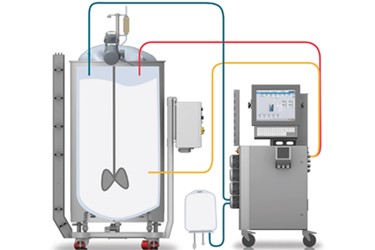Expert Tips on Implementing Foam Control in Chemical Processing Environments
Expert Tips on Implementing Foam Control in Chemical Processing Environments
Blog Article
A Comprehensive Overview to Applying Foam Control Solutions in Your Procedures
Reliable foam control is a critical aspect of functional efficiency that typically goes neglected. Understanding the intricacies of foam generation can considerably affect both efficiency and product high quality. By taking a look at key variables such as application compatibility and employees training, organizations can maximize their foam monitoring efforts.
Understanding Foam Difficulties
Foam challenges are a substantial worry across various industries, impacting operational effectiveness and product quality. The formation of extreme foam can prevent processes such as mixing, transport, and storage, leading to boosted downtime and waste. In industries like food and beverage, drugs, and petrochemicals, foam can disrupt assembly line, causing product incongruities and contamination threats.
In addition, foam can obstruct equipment capability, causing costly repair services and maintenance. In wastewater therapy, foam can disrupt clarifier procedures, resulting in reduced treatment performance and regulatory conformity concerns.
Comprehending the underlying sources of foam generation is essential for reliable management. Aspects such as surfactants, temperature changes, and frustration levels can all contribute to foam manufacturing. Recognizing these elements permits industries to carry out targeted strategies that lessen foam formation while maintaining product honesty.
Sorts Of Foam Control Solutions

Mechanical solutions include using devices such as foam skimmers or defoamers. These tools literally remove foam from the surface of liquids, therefore avoiding overflow and preserving optimum levels in activators and containers. Chemical solutions, on the other hand, include the application of defoaming representatives-- materials that disrupt the foam structure, causing its collapse. These representatives can be silicone-based, natural, or liquid, each offering distinct advantages depending upon the application atmosphere.
Finally, operational methods focus on process modifications. This may include customizing devices specifications, such as temperature level and stress, or altering the circulation prices of liquids to reduce foam generation. Applying excellent housekeeping techniques can additionally alleviate foam development by minimizing pollutants that contribute to foam security.
Picking the proper foam control option includes evaluating the specific needs of the procedure, consisting of the type of process, the characteristics of the products involved, and safety considerations.
Selecting the Right Products
Choosing the right foam control items requires a complete understanding of the specific application and its one-of-a-kind difficulties. Elements such as the type of foam, the setting in which it happens, and the desired end result all play critical duties in product selection. Foam Control. In sectors like food handling, it is important to pick food-grade defoamers that conform with safety and security policies while properly handling foam.
In addition, consider the thickness of the liquid where the foam issue exists. Some items are formulated for low-viscosity applications, while others are customized for thicker liquids. Compatibility with existing processes is one more crucial element; the picked foam control agents must incorporate seamlessly without interfering with overall operations.
One more essential element is the technique of application. Some items may require dilution, while others can be applied straight. Assessing the simplicity of usage and the called for dosage can offer insights into the item's performance and cost-effectiveness.
Implementation Methods
Successful application approaches for foam control remedies call for an organized approach that aligns item selection with functional demands. The first action entails a thorough analysis of the processes where foam occurs, determining specific areas that necessitate intervention. By involving cross-functional teams, including top quality, design, and production assurance, companies can collect insights that educate the option of the most effective foam control items.
Following, it is vital to establish clear objectives for foam decrease, making sure that these goals are quantifiable and attainable. This may involve specifying acceptable foam degrees and the timelines for application. Training employees on the properties and application approaches of chosen foam control representatives is similarly essential, as correct use is vital for optimum results.
Additionally, incorporating foam control solutions into existing operations requires cautious preparation. Inevitably, a well-structured method will boost operational efficiency while effectively managing foam-related challenges.
Tracking and Reviewing Effectiveness
Monitoring and examining the performance of foam control remedies is important for making sure that applied strategies yield the desired results. This process includes methodical information collection and evaluation to analyze the efficiency of foam control representatives and strategies. Trick efficiency indications (KPIs) need to be developed before execution, permitting a clear standard versus which to gauge progression.

Reviewing performance also requires periodic reviews of foam control procedures and agent efficacy. This can be accomplished through sampling and screening, permitting drivers to establish if you can try these out existing remedies are fulfilling functional demands. It is essential to get comments from team members that engage with these systems daily, as their insights can reveal functional subtleties that quantitative data might ignore.

Inevitably, an organized tracking and examination structure assists determine required adjustments, guaranteeing that foam control services remain effective, inexpensive, and her latest blog straightened with business goals.
Conclusion
In conclusion, reliable foam control services are crucial for enhancing functional effectiveness and keeping product top quality. A comprehensive understanding of foam obstacles, combined with the option of suitable products and application strategies, assists in the successful administration of foam generation.
Applying great housekeeping techniques can also minimize foam formation by decreasing impurities that contribute to foam security.
Picking the ideal foam control items requires a detailed understanding of the particular application and Check This Out its one-of-a-kind challenges (Foam Control).Effective implementation techniques for foam control services call for a systematic technique that straightens item selection with operational requirements.In verdict, effective foam control solutions are necessary for maximizing functional performance and maintaining product quality. An extensive understanding of foam difficulties, incorporated with the option of ideal items and execution approaches, facilitates the successful management of foam generation
Report this page